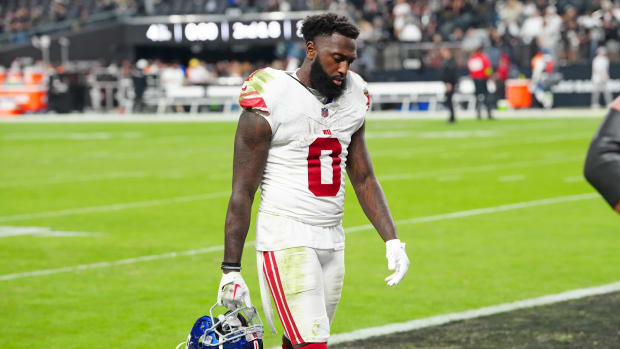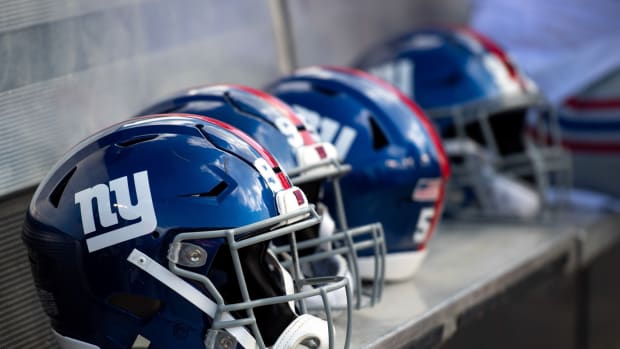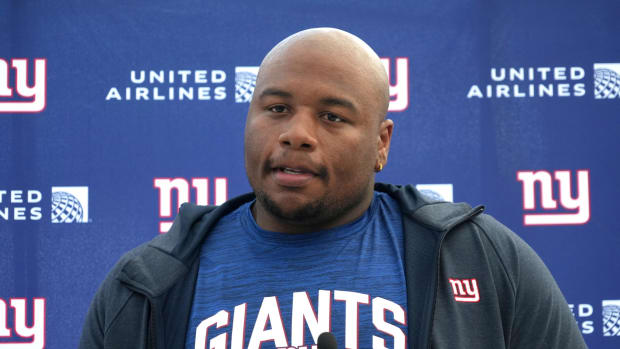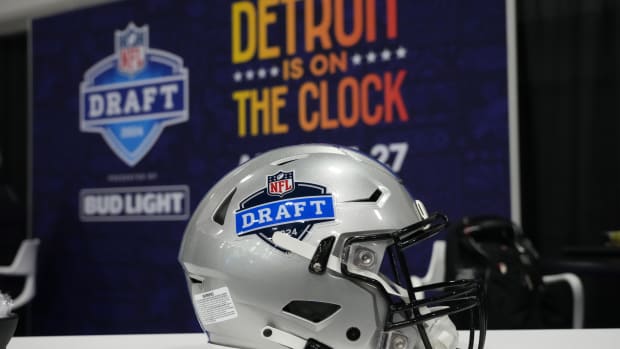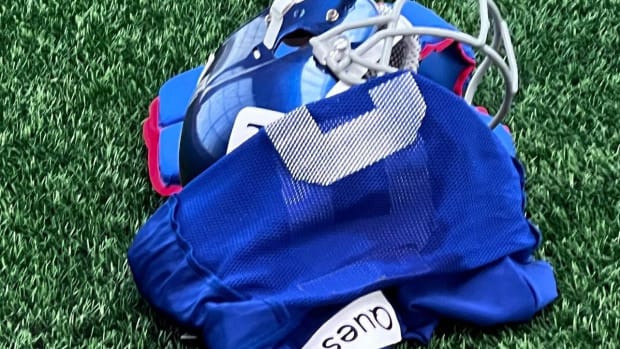New York Giants 2024 Draft Preview: Best Running Back Fits
Do the Giants need to add to their committee?
In the last few years, the New York Giants have gradually moved away from featuring a bell-cow running back and have instead moved toward a committee approach. This has been the result of a desire to become more of a passing offense but, more importantly, of the injury issues that have cost now-former running back Saquon Barkley playing time.
Speaking of Barkley, general manager Joe Schoen drew a line in the sand regarding what he expected to pay a running back, and that line wasn’t going to cross the $10 million APY threshold that Barkley received from the Philadelphia Eagles. As you’ll see in the next section, this is not necessarily the end of the world, not with the offense trending toward more of an air attack and not when one compares Devin Singletary’s career production (the deep stats) with that of Barkley’s.
Stats aside, having a committee consisting of a finesse back, a power back, and everything in between will give the Giants an array of options to wear down opposing defenses. Who could forget the one-two punch of Brandon Jacobs (power) and Ahmad Bradshaw (finesse) during the 2007 and 2008 seasons and how they ran wild against opposing defenses?
The Giants, who, in addition to Singletary, have Eric Gray, Gary Brightwell, Jashaun Corbin, and rookie Dante Miller, have options at the position. The question is whether they want to upgrade any of the options currently on the roster, e.g., Brightwell and/or Corbin, both of whom project as special teams players.
How Much Are They Going to Miss Saquon Barkley?
Saquon Barkley is a special kind of player, not just for what he brings on the field but also off it. He’s also been the Giants’ best and most consistent offensive threat, which, in one way, says a lot about how good he’s been when healthy but also says a lot about the lack of playmakers this team has had at other positions.
But before anyone laments about the Giants not paying Barkley, arguably their best player on offense last year, in Singletary, they got themselves a cheaper, healthier, and more productive option.
Barkley, a two-time Pro Bowler with three 1,000-yard rushing campaigns to his name, has a 42.5 percent success rate as a runner (an average calculated as picking up at least 40 percent of the required yards on first down, 60 percent on second down, and 100 percent on third down.)
While Singletary, who is not a high-volume back, has never logged a 1,000-yard rushing campaign, he has posted a 48.8 career success rate in 888 rushing attempts.
In the passing game, Barkley has a 72.7 percent catch rate with 12 touchdown catches but only a 38.1 percent success rate. Singletary has a 75.8 percent catch rate and a 45.9 percent yardage success rate.
Barkley will be missed in the locker room. He was extremely popular with his teammates, who voted him a team captain annually. He was also a wonderful representative of the franchise in the community. But Barkley’s production started to wane, and not just because of the offensive line woes.
Potential Prospects
Here is where we would give you a pick for Day 1, Day 2, and Day 3. However, in the case of the running backs, this is not a very deep class. Yes, there is talent to be had, but we would be stunned to see any running backs drafted in the first or the second round's top half.
That said, some good prospects can be had late on Day 2 or Day 3 and might be solid fits. Here are three, presented as how we think they might go off the board, that could draw the Giants’ interest if the value aligns with the round.
Trey Benson (Florida State): Benson doesn’t quite have the vision to maximize his upside in a zone-blocking scheme, but he can execute most plays called. He also has an upside as a receiver and can be an asset in the passing game. A late second-round value, Benson should become a consistent option who keeps an offense on schedule and picks big plays when the opportunity presents itself.
Jonathon Brooks (Texas): A torn ACL likely knocked Brooks’ draft stock down from being a late-first-round pick. Thus far, he hasn’t been able to participate in the draft process beyond medical checkups and interviews. Still, his college film shows a well-rounded back with the speed, agility, vision, and contact balance to be a starter in the NFL.
He likely wouldn’t make an NFL roster this year, but as a potential practice squad candidate where he could continue his rehab, he might be worth taking a flier on late in the draft or as an undrafted free agent if no one picks him.
Braelon Allen (Wisconsin): Allen is one of the youngest players in the draft at age 20, but at 6-1 and 235 pounds, he’s that big power back that the Giants don’t have on the roster. Allen is a big, physical, and imposing runner who can play up to that size.
He’s at his best running downhill and is a “one-cut” runner who almost seems to look for contact rather than minimize it. If the Giants want to add a punishing, physical dimension to their offense, Allen should fit the bill.
- Follow and like us on Facebook.
- Submit your questions for our mailbag.
- Follow Patricia Traina on Instagram.
- Check out the Giants Country YouTube Channel.
- Subscribe and like the LockedOn Giants YouTube Channel
